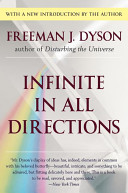A Black Hole is a Star Forever Falling Inward
He talked to us about the new theory of black holes which he had then just worked out. The idea of a black hole was one of the most dramatic consequences of Einstein's theory of gravity. According to Einstein's equations, a massive star at the end of its life, when it has exhausted its nuclear fuel, continues to contract and grow smaller and denser under the influence of its own gravitation. After the nuclear fuel is used up, the star goes into a state of gravitational collapse. All parts of the star fall more or less freely inward toward the center. Now you would imagine that the free fall could not continue for very long, because the falling material would in a short time arrive at the center of the star. But Einstein's equations have the peculiar consequence that the star can continue to exist forever in a state of permanent free fall without ever reaching the bottom. This state of a star in permanent free fall is what we call a black hole.
How can it happen that a star continues to fall freely without ever hitting bottom? What happens is that the space in the region of the hole is so strongly curved that space and time become interchanged. As you fall into the hole, your time becomes space and your space becomes time. More precisely, if you observe the collapsing star from the outside, you see its motion slow down and stop because the direction of time inside the hole is perpendicular to the direction of time as seen from the outside. This is a difficult state of affairs for us to visualize, but it seems to be the way nature works. The collapsing star can continue to fall freely forever because its sense of the flow of time is perpendicular to ours. This picture of a black hole is what we call the classical theory, the theory which was deduced from Einstein's equations and was generally believed to be true until Stephen Hawking came along. {21} The classical theory is still believed, even after Hawking, to be a good approximation for practical purposes. It says that black holes are absolutely permanent and absolutely black. An ideal classical black hole would swallow without trace everything that falls into it, and would emit from its surface no light or any other kind of radiation. We have fairly good evidence that black holes exist and are even quite common in the parts of the universe which we can observe. So far as the observable effects of black holes are concerned, the classical theory gives a satisfactory account of what is going on.
But Stephen Hawking told us that the classical theory is not good enough. Stephen went beyond the classical theory in several directions. He succeeded in putting together a coherent picture of black holes, including not only the laws of gravitation but the laws of thermodynamics. In his new picture, a black hole is not just a bottomless pit but a physical object. A black hole is not totally black but emits thermal radiation at a certain definite temperature. A black hole is not absolutely permanent but will ultimately evaporate into pure radiation. Thus Stephen brought black holes back out of the domain of mathematical abstraction into the domain of things that we can see and measure.
Notes:
Folksonomies: paradigms black hole paradigm shifts
Taxonomies:
/science/physics (0.573044)
/science/physics/astrophysics (0.358755)
/science/ecology/pollution (0.352408)
Keywords:
black hole (0.961023 (positive:0.229978)), black holes (0.785699 (positive:0.097276)), classical theory (0.623789 (positive:0.077167)), permanent free fall (0.553461 (negative:-0.366343)), star (0.538471 (negative:-0.531726)), Forever Falling Inward (0.402039 (negative:-0.646426)), nuclear fuel (0.385643 (negative:-0.413106)), Stephen Hawking (0.363981 (negative:-0.736799)), certain definite temperature (0.347611 (neutral:0.000000)), classical black hole (0.342751 (negative:-0.651595)), fairly good evidence (0.336727 (positive:0.696881)), time (0.335432 (negative:-0.279784)), Einstein (0.273338 (positive:0.011055)), dramatic consequences (0.263328 (positive:0.764084)), massive star (0.259837 (negative:-0.456781)), peculiar consequence (0.257128 (negative:-0.478187)), gravitational collapse (0.255127 (negative:-0.289689)), new theory (0.252086 (negative:-0.646426)), short time (0.244906 (negative:-0.665987)), satisfactory account (0.242864 (positive:0.554425)), observable effects (0.240628 (negative:-0.378892)), bottomless pit (0.238492 (negative:-0.429221)), practical purposes (0.238135 (positive:0.561261)), mathematical abstraction (0.237420 (positive:0.503107)), difficult state (0.233984 (negative:-0.621445)), good approximation (0.232920 (positive:0.561261)), thermal radiation (0.232725 (neutral:0.000000)), physical object (0.232658 (neutral:0.000000)), pure radiation (0.229900 (negative:-0.694363)), coherent picture (0.227357 (negative:-0.585820))
Entities:
Black Hole:FieldTerminology (0.883443 (negative:-0.187430)), black holes:FieldTerminology (0.430692 (positive:0.048638)), Einstein:Person (0.271729 (positive:0.166766)), Stephen Hawking:Person (0.221181 (negative:-0.736799)), Stephen:Person (0.160612 (negative:-0.100143)), coherent:OperatingSystem (0.117344 (negative:-0.585820))
Concepts:
General relativity (0.964628): dbpedia | freebase | opencyc
Black hole (0.599382): dbpedia | freebase | opencyc
Physics (0.582602): dbpedia | freebase | opencyc
Universe (0.484062): dbpedia | freebase
Stephen Hawking (0.450012): yago | dbpedia | freebase | opencyc
Gravitation (0.432568): freebase | dbpedia | website
Hawking radiation (0.415513): dbpedia | freebase | yago
Entropy (0.411201): freebase | dbpedia





